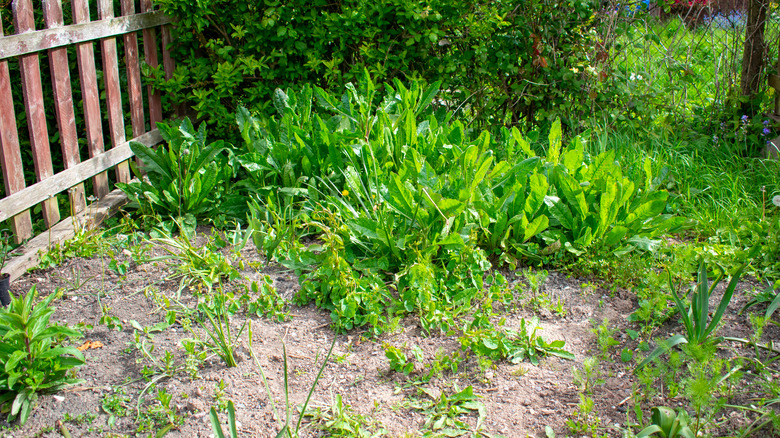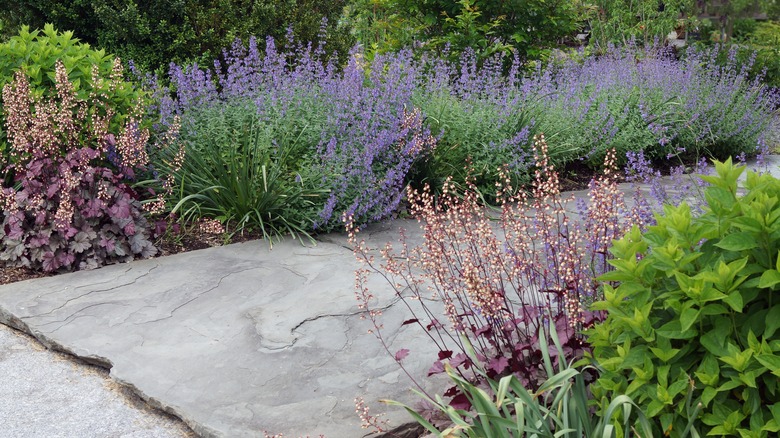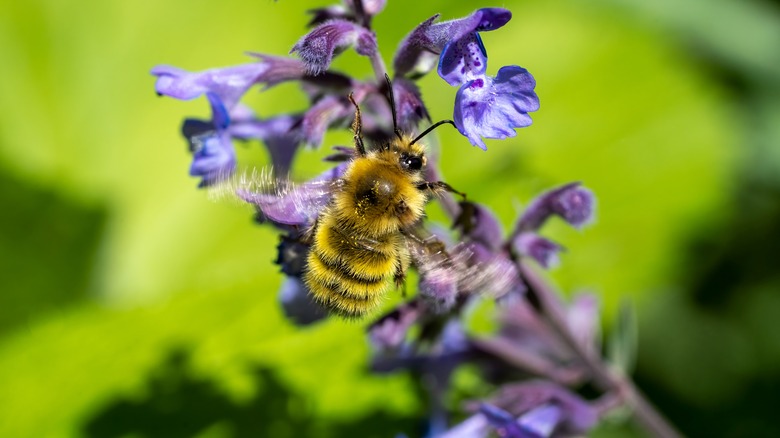Growing This Aromatic Herb Can Help Keep Excessive Weeds Out Of The Garden
If you're constantly fighting an excessive amount of weeds in your garden, there are a number of things that you can do to prevent weed growth in the first place. While mulching with organic materials is a good option, you can also grow plants that will act in a similar fashion to cover and shade the soil. This, in turn, inhibits the germination of weed seeds and prevents too many weeds from invading your garden. In horticultural applications, this method of weed control is known as cover cropping, and there are various cover crops that can suppress weeds in your garden.
But if you love herbs and the aromas they add to your landscape, consider planting this weed-suppressing catmint hybrid called Walker's Low catmint (Nepeta x faassenii). It's a lovely mounding perennial that quickly grows back in the spring to cover and shade the soil, preventing weeds from becoming established in your garden.
Characteristics of Walker's Low catmint
Walker's Low catmint is a hybrid that was first bred in the Netherlands and later developed further in England. While this plant is a member of the mint family, it has an upright mounding growth habit rather than one that spreads aggressively. This means that it won't take over your garden like other mint species will.
According to the NC State Extension, this fragrant herb can reach a height of 2 feet and a spread of around 18 to 36 inches. It can be successfully grown in USDA hardiness zones 4 through 8. The plant doesn't really like humidity, so it doesn't do well in more humid zones. As a sterile hybrid, Walker's Low catmint doesn't produce seeds so it won't spread into areas of your garden where it's not wanted, and it's not regarded as invasive.
This herbaceous perennial has silvery green-gray leaves and produces lavender or mauve flowers in early summer, and can continue flowering into the fall. Walker's Low catmint is aromatic, especially when the leaves or stems are crushed. Apart from being excellent at weed suppression, this plant is also highly attractive to pollinators such as bees and butterflies. Plus, this lavender-blue plant will encourage hummingbirds to visit your garden.
How to grow Walker's Low catmint in your garden
Walker's Low catmint is relatively easy to grow and doesn't require a lot of maintenance. It prefers a sunny spot in the garden but can still handle a little shade. It tolerates most soil types from sand to clay and can even survive in fairly rocky soils. The soil should have good drainage but the plant is drought-tolerant once it's well established.
For continual flowering from summer through fall, the plant can be clipped back by around a third to a half once the initial blossoming of flowers has finished. This will help it maintain a good shape and promote further flowering. To boost its weed-suppressing powers, propagate Walker's Low catmint by taking soft wood cuttings in summer or dividing the clump in spring.
Walker's Low catmint is not susceptible to significant pest problems, nor is it attractive to rabbits or deer. Another benefit of growing this plant in your garden is that the strong scent of the leaves can repel common garden pests such as aphids — in fact, it's one of a number of fragrant herbs that will keep bugs off of your citrus trees.


